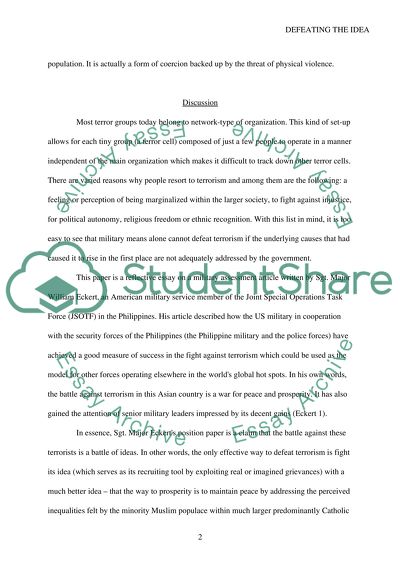Cite this document
(“Unconventional Warfare in the Southern Philippines Essay”, n.d.)
Retrieved from https://studentshare.org/military/1430379-unconventional-warfare-in-the-southern-philippines
Retrieved from https://studentshare.org/military/1430379-unconventional-warfare-in-the-southern-philippines
(Unconventional Warfare in the Southern Philippines Essay)
https://studentshare.org/military/1430379-unconventional-warfare-in-the-southern-philippines.
https://studentshare.org/military/1430379-unconventional-warfare-in-the-southern-philippines.
“Unconventional Warfare in the Southern Philippines Essay”, n.d. https://studentshare.org/military/1430379-unconventional-warfare-in-the-southern-philippines.


